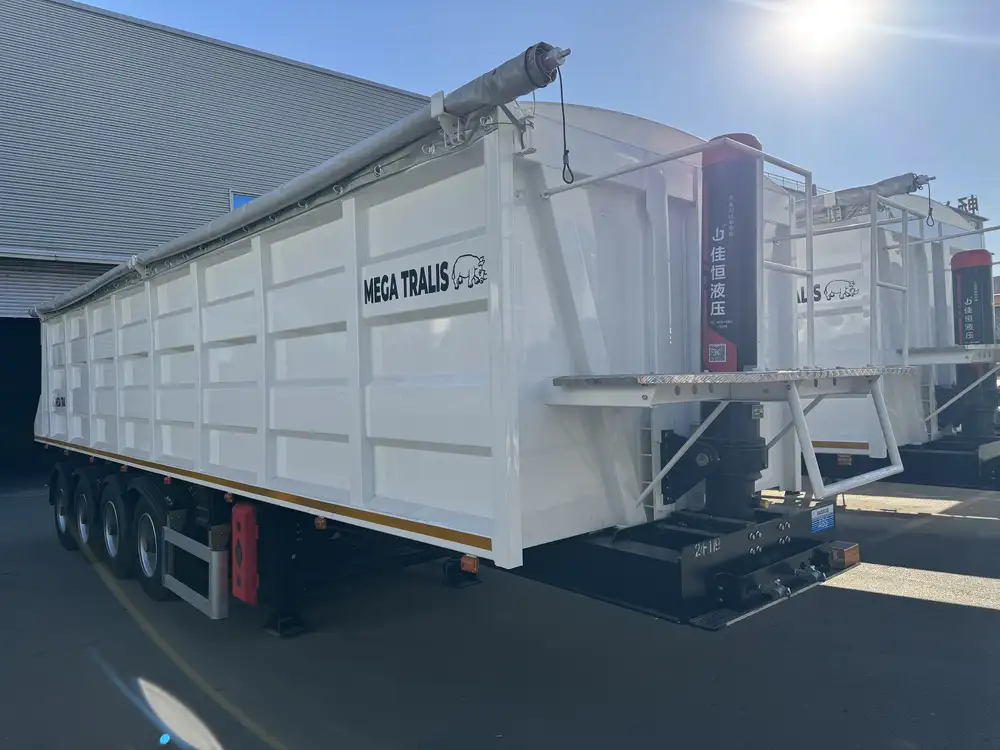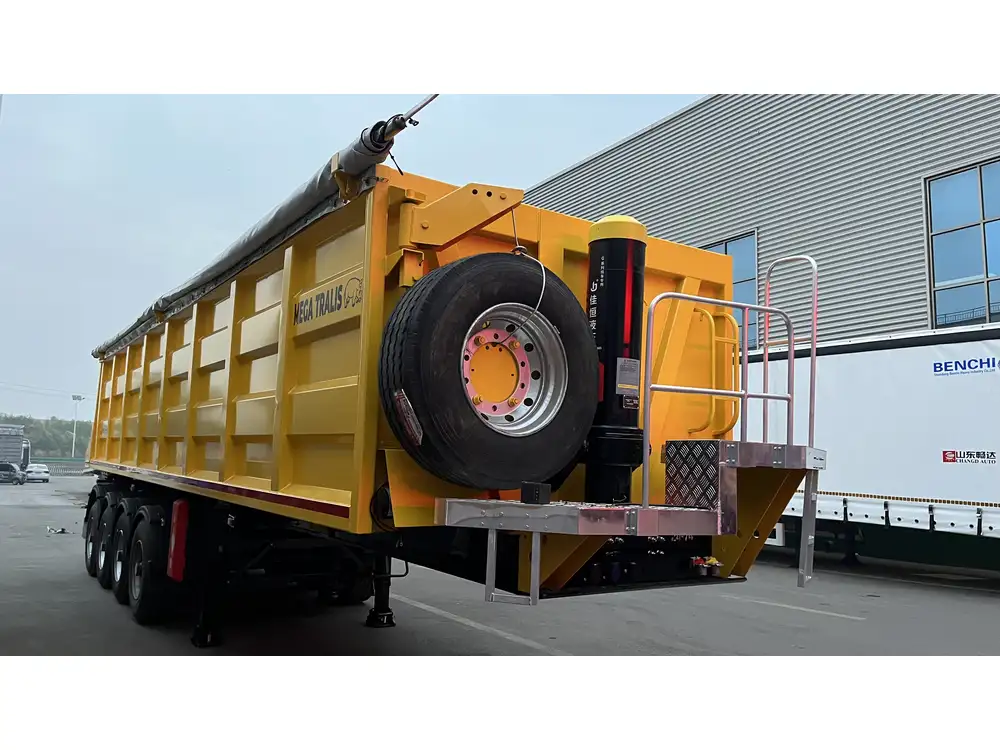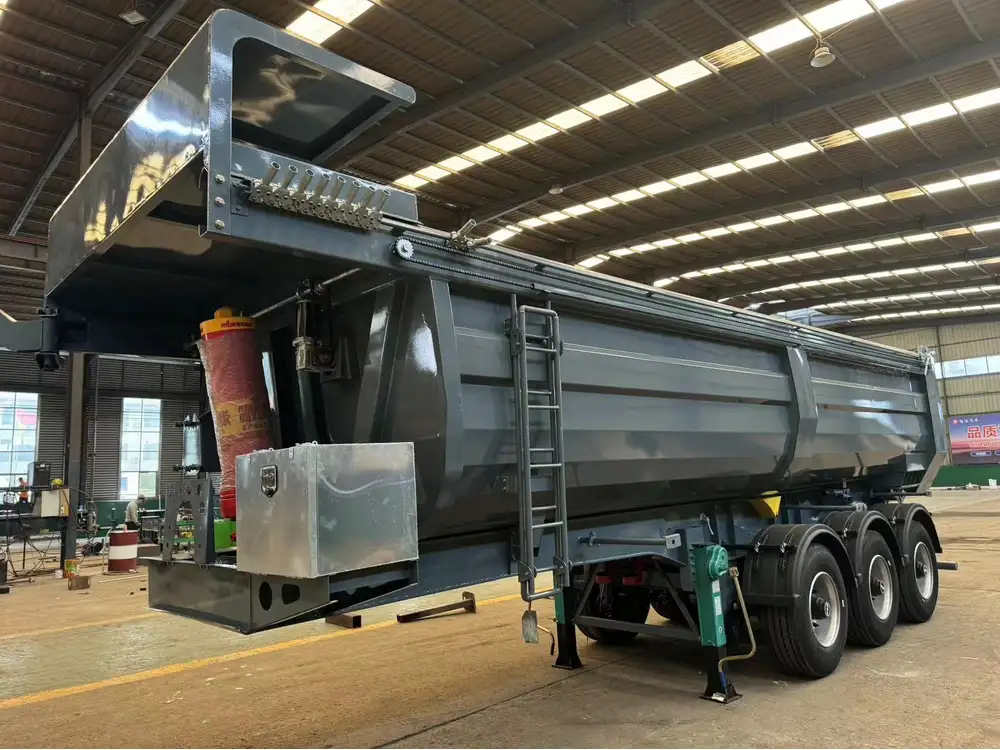Swing-out semi-trailer doors serve as a crucial component in ensuring the security and accessibility of goods being transported. When these doors become loose or misaligned, they can lead to a range of operational issues, including cargo damage, safety hazards, and increased wear and tear on the trailer. This article aims to provide an in-depth understanding of how to tighten up swing-out semi-trailer doors effectively, ensuring optimal functionality and longevity.
Understanding the Structure of Swing-Out Semi-Trailer Doors
Swing-out semi-trailer doors consist of several components:
- Hinges: Usually made from durable steel or aluminum, these are pivotal for the door’s function.
- Latch Mechanism: Ensures doors remain shut during transit.
- Weather Stripping: Prevents water and debris from entering the trailer.
- Door Panels: The main body of the door which opens and closes.
Understanding the function and connection of these parts helps us diagnose issues and identify effective solutions.
Identifying Common Problems
Before diving into the solutions, it’s vital to recognize the signs of malfunctioning swing-out doors:
- Sagging Doors: Doors may droop due to worn-out hinges or improper installation.
- Loose Latching: Inability to secure the doors tightly, often caused by rust or poor hinge alignment.
- Inadequate Weather Sealing: Compromised sealing can result from worn weather stripping or misaligned doors.

Step-by-Step Guide to Tightening Swing-Out Semi-Trailer Doors
Step 1: Gather the Necessary Tools
To effectively tighten swing-out semi-trailer doors, you will need:
- Adjustable Wrench
- Socket Set
- Screwdriver (Flat and Phillips)
- Lubricant (like WD-40 or silicone spray)
- Replacement Parts (if necessary)
- Measuring Tape
Step 2: Inspect the Hinges
Check for Rust or Corrosion: Examine the hinges for signs of wear and tear. Rust could weaken the structure, leading to ineffective tightening.
Tighten Loose Bolts: Use a socket set to tighten all visible bolts on the hinge. Ensure both the hinge and door bolts are secure.
Replace Damaged Hinges: If any hinge is compromised, replace it promptly. A solid hinge ensures stable support for the door, preventing sagging.

Step 3: Adjust the Latch Mechanism
Inspect the Latch Alignment: With the trailer’s doors closed, check for proper alignment between the latch and the latch plate. Misalignment can lead to latching issues.
Realign the Latch: If misaligned, loosen the screws holding the latch, adjust it into the correct position, and retighten.
Lubricate the Latch: Apply a lubricant to the latch mechanism to ensure smooth operation.
Step 4: Assess and Replace Weather Stripping
Examine Weather Stripping: Check for any cracks or gaps in the weather stripping. This prevents water from entering the cargo area.
Replace Worn Stripping: If damaged, measure the length of the weather stripping required, cut the replacement to size, and apply it securely along the door edges.
Step 5: Test the Door
Open and Close the Doors: After completing your adjustments, test the doors multiple times. They should swing open smoothly and securely latch closed.
Check for Gaps: Ensure there is no significant gap when the doors are closed. Proper sealing improves insulation and protects your cargo from external elements.

Additional Maintenance Tips
Regular Inspections: Make it a habit to inspect your swing-out doors every few months. This proactive approach can save you from significant repairs down the road.
Lubrication: Regularly lubricating hinges, latches, and locks prevents rust and ensures smooth functioning.
Avoid Overloading: Understand the weight limits of your trailer. Overloading can cause undue stress on the door mechanisms, leading to premature wear.
The Importance of Professional Help
In situations where extensive damage is evident, or if you lack the resources to perform the necessary repairs, it may be prudent to seek professional assistance. Technicians specializing in trailer repair can offer services such as:
- Comprehensive inspections and diagnostics.
- High-quality replacements for damaged components.
- Professional adjustments tailored to specific trailers.
Frequently Asked Questions

Q1: What should I do if the latch won’t engage properly?
If the latch won’t engage, check for misalignment, debris blocking the latch mechanism, or signs of rust. Adjust or replace parts as needed.
Q2: Can I repair swing-out doors myself, or should I hire a professional?
If you’re comfortable with basic tools and repairs, you can perform maintenance yourselves. However, for complex issues, consulting a professional is advisable.
Q3: How often should I perform maintenance on my swing-out semi-trailer doors?
Regular checks every three to six months, or before long trips, are recommended to ensure optimal performance.

Q4: What should I use for rust prevention?
Consider using a rust prevention spray or regularly lubricating the hinges and latch mechanisms with appropriate products.
Conclusion
Swing-out semi-trailer doors are essential for safe transport. By understanding their components and practicing routine maintenance, potential issues can be mitigated before they escalate. Tightening and repairing these doors isn’t merely about fixing a problem; it’s about ensuring the integrity of your cargo and the safety of your operations. Adopt these practices, and you’ll enhance not just the longevity of your semi-trailer doors but also your overall shipping efficiency.



